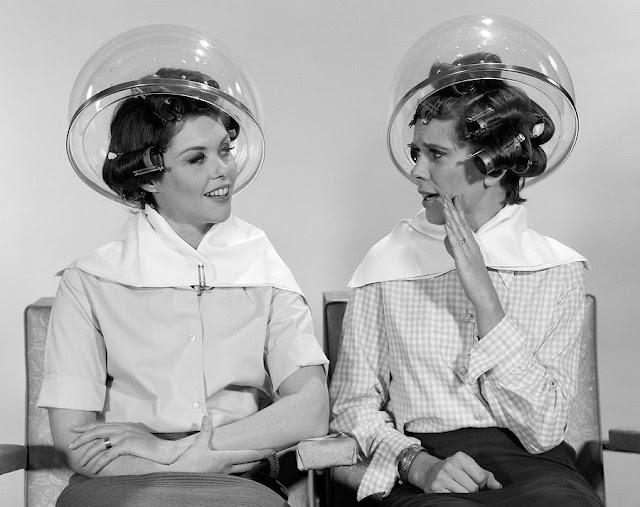Hair dryers didn’t take off until the first handheld units became available, in the early 1920s. These metal, gun-shaped models arrived right when women’s hairstyles were shifting from the mountainous piles of Gibson Girl curls that required dozens of bobby pins to the tidy, easier-to-shape bobs of flappers. It was a radical break from past styles.
Early handheld hair dryers were still difficult to use. Their metallic (often aluminum) casings made them hard to wield. Also, drying times were far longer than today’s norm, as the devices drew only 100 watts of electricity compared to the 2,000 watts of modern versions. That made them exhausting to use over the long periods of time required for drying.
The handheld versions for the home were joined by hooded models for the salon. Made of metal and later of plastic, and applying an even, all-over heat, hooded dryers entered widespread use in 1930s. In the decades that followed, they became a defining trait of the salon scene.
By the 1960s, hair dryer technology had improved dramatically. Hair dryers of the 1960s were made from more lightweight materials than their earlier counterparts and were capable of producing up to 500 watts of heat. The improvements made in hair dryer technology were due to advancements made in the electric motors used in hair dryers.

















0 comments:
Post a Comment